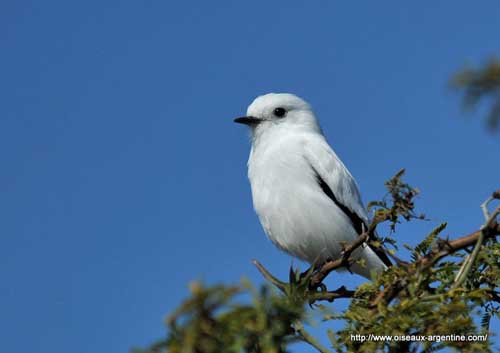
Fr: Pépoaza irupéro
All: Weißnonnentyrann
Esp: Monjita Blanca
Ital: Monjita bianca
Nd: Witte Monjita
Sd: Vit monjita
Port: Noivinha
Photographers:
Eduardo Andrés Jordan
MIS AVES - AVES DE ARGENTINA
Philippe and Aline Wolfer
OISEAUX D'ARGENTINE
Text by Nicole Bouglouan
Sources:
HANDBOOK OF THE BIRDS OF THE WORLD Vol 9 - by Josep del Hoyo - Andrew Elliot - David Christie - Lynx Edicions - ISBN: 8487334695
BirdLife International (BirdLife International)
JUMARA.com.ar - La conservación parte del conocimiento
White Monjita
Xolmis irupero
Passeriforme Order – Tyrannidae Family
BIOMETRICS:
Length: 17-18 cm
DESCRIPTION:
The White Monjita is a black and white bird, often seen on exposed perches.
Some legends talk about this bird as the soul of God. For this reason, it is never seen as cagebird because it does not sing anymore and rapidly dies.
It is also known as “Ghost bird” because in addition of its pure white plumage, it often perches on head stones in country graveyards.
The adult male has pure white plumage except for the black primary flight feathers, the primary coverts and the tip of the notched tail.
Bill, legs and feet are black. Eyes are dark brown.
The female is similar with grey tinge on the back.

We can find two races. The subspecies X.i. niveus is slightly smaller than X.i. irupero, and has broader tail tip.
VOICE: SOUNDS BY XENO-CANTO
The White Monjita is often silent, but we can hear a weak “ghik” and a plaintive “piew”.
During the breeding season, the male sings at dawn, a soft, repeated “preeeyp tooit preeeyp tooit”.
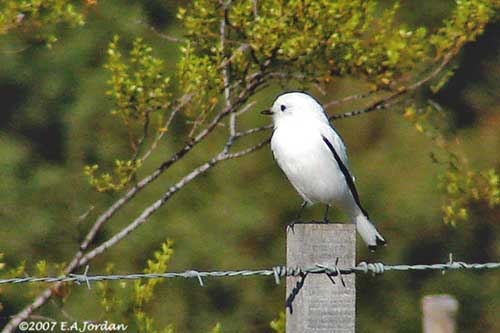
HABITAT:
The White Monjita frequents open and semi-open grassland, savannahs, pastures with scattered trees and bushes. It is often seen along the roads, perched on fences, and near habitations in rural areas, but also near marshes or open water.
It occurs usually below 1000 metres of elevation, but can be seen higher, up to 1300 metres according to the range.
RANGE:
The White Monjita is found in C and NE Argentina, S and SE Brazil, Paraguay, Bolivia and Uruguay.
This species is resident in its range.
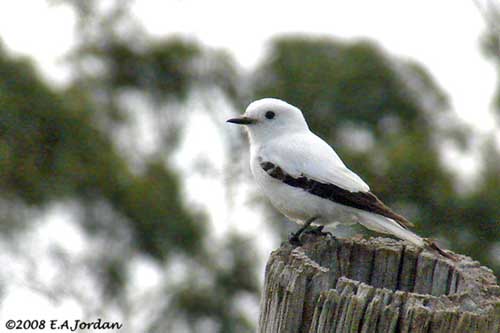
BEHAVIOUR:
The White Monjita feeds exclusively on insects. It hunts from exposed perches and drops to the ground where it may pursue its prey. It also hovers for long periods before to swoop down onto its prey.
The flying insects are caught in the air in aerial sallies, and the bird returns to the same perch.
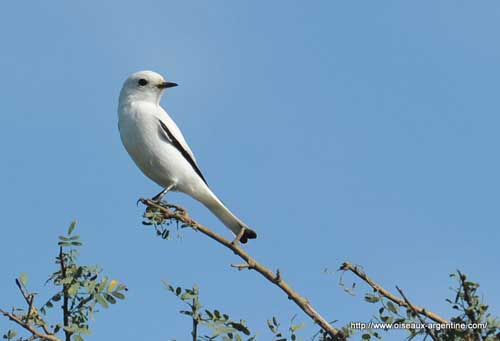
The White Monjita hides among the vegetation when alarmed. The dense spiny bushes provide it good protection.
It occurs in pairs. The territory is strongly defended against other birds, including the same species.
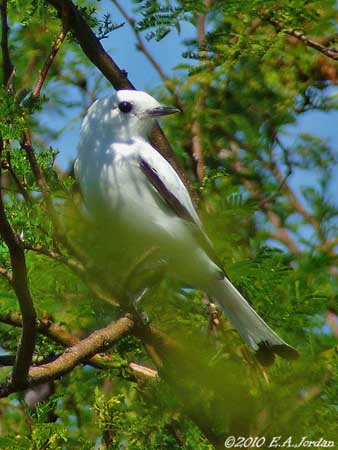
There is no available information about displays, but regarding the strongly contrasted black and white plumage, this bird probably displays this pattern by spreading the wings and fanning the tail.
Some soft songs are uttered by the male at dawn during the breeding season.
FLIGHT:
The White Monjita has low, slow and quiet flight. It performs aerial sallies when hunting, and can hover for long periods almost motionless.
REPRODUCTION:
The breeding season occurs between September and December in Argentina, but this period varies slightly according to the range.
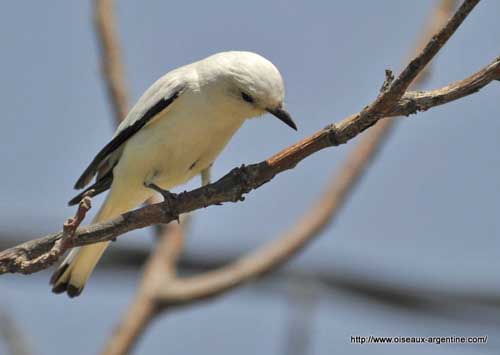
The White Monjita nests in cavities, a hole in tree or an abandoned nest of Rufous Hornero, usually about 3 metres above the ground.
Inside the cavity, the birds build a large open cup made with twigs and grass, and the interior is lined with finer materials such as feathers or hair.
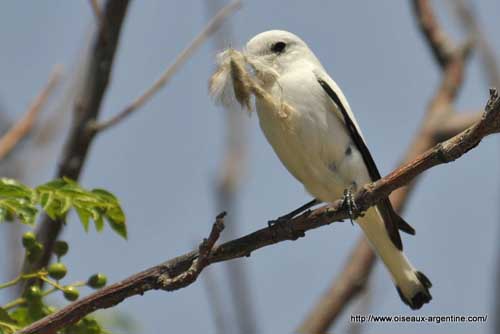
The female lays 3-4 white eggs with fine reddish and grey markings. The incubation lasts 12-14 days. The chicks are fed by both adults, and fledge about 17 days after hatching.
This species is parasitized by the Shiny Cowbird (Molothrus bonariensis).
DIET:
The White Monjita feeds exclusively on insects caught by aerial sallies from exposed perches.
PROTECTION / THREATS / STATUS:
The White Monjita is common in Paraguay and Argentina, but rare in E Brazil (X.i. niveus). The species needs protection and management for conservation of its habitat.
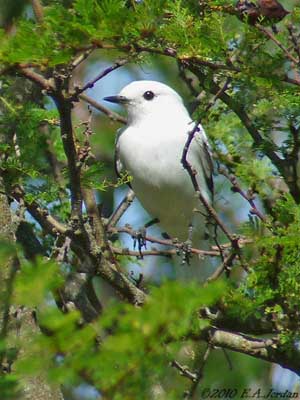
Other sources mention this species as Vulnerable. The nests are destroyed by fires, the brood parasitism by Shiny Cowbird is very important in Uruguay, agriculture and grazing modify the grasslands and plantations of exotic tree species alter the remaining grasslands in Argentina.
The White Monjita occurs in some protected areas where they can breed, but in small numbers.
However, the populations are not currently threatened.